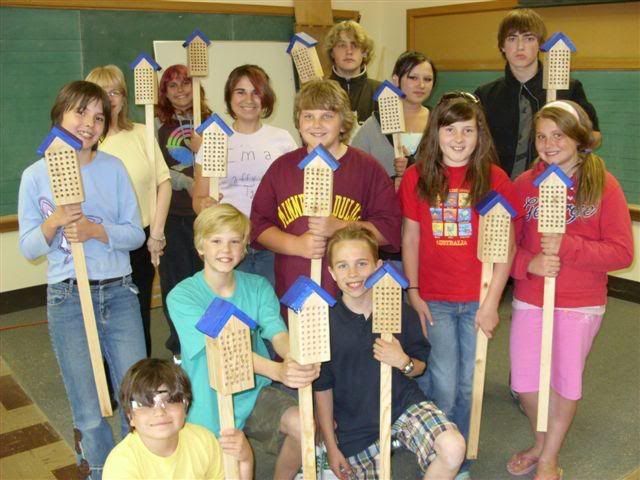The pace of change in our schools has been tremendous.
 The incessant clatter of students taking typing classes has been replaced by the more muffled sound of computer keyboarding. Many schools have abandoned ordered rows of students for a more collaborative ‘working group’ arrangement.
The incessant clatter of students taking typing classes has been replaced by the more muffled sound of computer keyboarding. Many schools have abandoned ordered rows of students for a more collaborative ‘working group’ arrangement.
And, in many cases, classes like phys ed, home economics and wood shop have been replaced with video production and internet design.
There are, however, people working to ensure that kids get a far more rounded education than they can get from sitting in front of a computer. Paul Meisel is one of those people.
At the Flagship Academy – a private school just outside of Minneapolis, Minnesota, Paul teaches his 10 – 14 year old students just how analytical, mathematically engaging and fun woodworking can be.
Paul’s system for teaching woodworking is called Study Technology. Basically, he breaks all functions down to their elemental parts, and then instructs his students to repeat those basics until they have them down cold. Hammering. Drilling. Cutting. Smoothing. Not only does this ensure accuracy in work and – most importantly – safety, it also builds a great deal of confidence in his students.
 “Many of the students in my classes have never used a woodworking tool in their lives,” said Paul. “Giving them the skills they need to overcome their fears and inexperience is a liberating experience for them. Many of the students are so energized by the process, they actually become shop assistants, shepherding their classmates forward.”
“Many of the students in my classes have never used a woodworking tool in their lives,” said Paul. “Giving them the skills they need to overcome their fears and inexperience is a liberating experience for them. Many of the students are so energized by the process, they actually become shop assistants, shepherding their classmates forward.”
Once those basics are mastered, well, they sky is the limit. Just as a martial arts student is drilled on the basics, and then turns those basics into a flowing routine, Paul’s students advance to make projects. Simple at first, the projects provide ample opportunity for Paul’s eager learners to reinforce what they learned and to see exactly how the skills build upon each other.
The projects are some of the basics you would expect to find taught to children in this age range – bird feeders, window planters and peg jump games. However, some of the projects are not quite what you would expect. “One group of students built a series of bee houses to provide shelter for our local wild bee colonies. With the current colony collapse syndrome wiping out entire bee populations, our students wanted to do something to help make a difference and provide a safe haven for the wild colonies.” Paul even pointed out that the project got the attention of the local TV news programs, giving more exposure to the effort.

Paul is currently in the process of writing a book about his teaching techniques featuring many of his hard-learned lessons. He has offered to send me a copy once published, and I’ll be sure to post a review once it’s available.
But, why woodworking as the medium? While this method could be used to teach other subjects, the ‘industrial arts’ provide a tangible way to gauge progress and a visual tool to instruct the finer points. “If one of the students becomes confused or makes a mistake in the project, it’s easy for him or her to to retrace the last few steps to see where the error crept in. This way, we can go back to the point of confusion and see how they can improve their basic fundamental skills.” Paul joked, “There are many adults who haven’t mastered that skill yet. I believe these students will have a much better grounding and can apply these skills regardless of their field of study.”
If you have an interest in teaching woodworking to kids, e-mail Paul at Paul@Meiselwoodhobby.com.

I’ve started a scroll wood working shop-school at my church which is open for free (so far but I’m getting poorer). I’ve done 7 classes (1 a week) and I’ve consistently gotten3-4 students which isn’t bad for a small community. I bought a rbi hawk (got it on e-bay cheaply) and a harbor freight scroll saw which is kept full time at the church so the students can use them between classes. This is a poor community where people out of work could re-purpose wood and make something to sell. Have you got any ideas that would help?
Kathy –
How about writing a letter to some of the big manufacturers? Ridgid. DeWalt. Delta. Explain your situation. Show them what you are doing. Explain that their contribution would be tax-deductible.
Do the same thing at Lowe’s and Home Depot.
Put an ad in Craigslist explaining what you are doing… you never know when someone wants to upgrade or would be willing to help out….